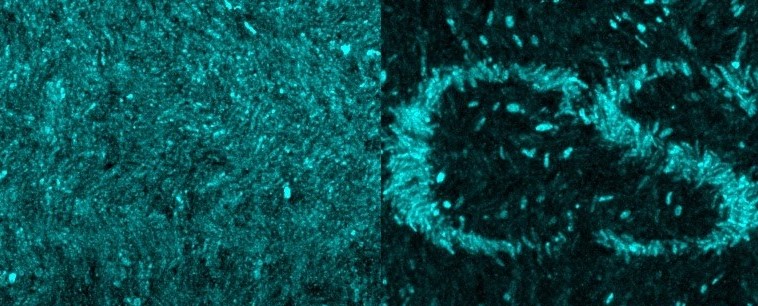Bacteria can store information in a similar way to our neurons

Researchers at UPF and the University of California in San Diego (UCSD) have discovered that communities of bacteria known as biofilms have the ability to store information.
Biofilms are colonies of bacteria that cooperate to protect their inhabitants from external threats (such as antibiotics). The researchers Gurol Süel, Jordi Garcia-Ojalvo and colleagues discovered in a previous study that bacteria in biofilms use electrical signals to communicate, similarly to neurons in the brain. These electrical signals consist of charged atoms (ions) that enter and leave the cell, and their propagation allows communication between bacteria.
They have shown that bacteria can store information in a similar way to neurons, that is to say, controlling the flow of ions through their cell membrane.
Now, in a new study published in the journal Cell Systems, Süel, Garcia-Ojalvo and colleagues show how bacteria of the species Bacillus subtilis have memory capacity, i.e., can store information about their past conditions. “Through a combination of experiments and mathematical models we have shown that bacteria can store information in a similar way to neurons, that is to say, controlling the flow of ions through their cell membrane”, explains Jordi Garcia-Ojalvo, full professor of Systems Biology at UPF. Therefore, the discovery reveals a parallel between unicellular organisms and the far more complex neurons that process memory in our brains.
In this case, they used light to vary this flow of ions, which has allowed them direct single-cell resolution visualization. “We observed that two neighbouring bacteria behave differently, depending on whether or not they have received light. These bacteria continue to behave differently even hours after light induction”, Garcia-Ojalvo adds. This cell-size resolution enables storing relatively complex images, as the researchers were able to show in their experiments.
The ability to encode memory in bacterial communities could be of great importance for the design of complex computer systems using living organisms.
According to the researchers, the result may inspire new approaches to synthetic biology. The ability to encode memory in bacterial communities could be of great importance for the design of complex computer systems using living organisms. The study also provides new evidence of the evolutionary history of neuronal communication, and therefore our brain’s ability to process information, in far simpler cells.
